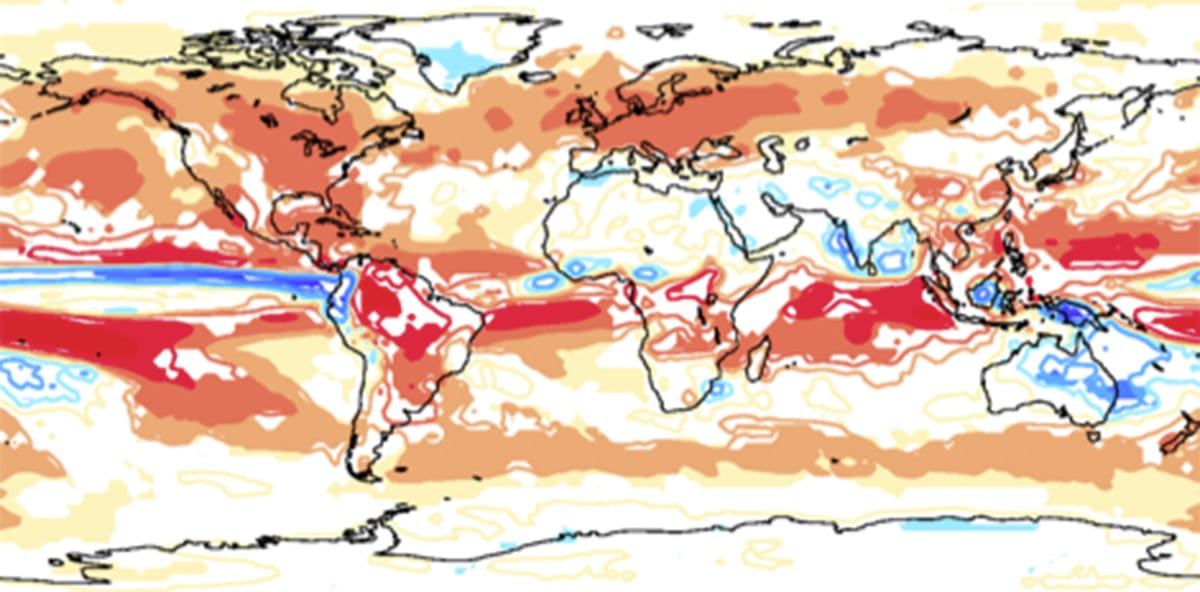Duncan McLaren’s blog post on climate justice and climate modelling (below) highlights important findings and shortcomings of existing research on geoengineering, particularly Solar Radiation Management (SRM – see our fact sheet here). However, the Geoengineering Monitor team does not share all his views – in particular the openness to eventual deployment of geoengineering technologies.
by Duncan McLaren
Over the past six years I’ve been studying geoengineering from a perspective of climate justice. Since the Copenhagen Summit it has seemed to me that geoengineering is a ‘climate fix’ in waiting. So I’ve been trying to understand whether it could or might contribute to climate justice. As part of that quest I looked closely at the results of those geoengineering modelling studies which sought to tell us something about the distribution of the consequences of (theoretical) geoengineering – notably through Stratospheric Aerosol Injection (SAI).
The results of my review of modelling approaches were recently published in the journal Energy Research and Social Science. I found that the models suggested varying distributional effects, depending on the assumptions and presumptions of the modellers. Most models suggest that global SAI designed to lower temperatures would result in many gains, but also a new pattern of winners and losers. SAI would not perfectly repair or restore a climate distorted by excess greenhouse gas emissions. It is difficult to say exactly which areas would lose and gain in the interplay of changes in temperatures, precipitation and other climate extremes. But what I found particularly interesting was the tendency of modellers to design ever more complicated schemas for SAI that would minimise, or even eliminate the areas in which novel climates would arise in the models. Of course, in the real world, trade-offs and conflicts over desirable climates would likely remain. Nonetheless, based on such modelling, a number of academics seem to have concluded that under SAI it may be possible to largely avoid additional harms. Moreover – because the damages from climate change most heavily impact poorer people, and those damages could be reduced by SAI – some suggest that there may be therefore a moral duty to geoengineer.
This is of course, a very paternalist interpretation of the climate problem and possible responses. In this blog I do not want to go further into the alternative ethical approaches which might suggest different responses. Rather I want to cast light on some key features of the modelling which I believe have contributed to an overly rosy view of the potential for SAI.
First is a tendency of modellers to contrast their geoengineered worlds with business as usual trends in greenhouse gas emissions – often using a baseline of a quadrupling of levels of CO2 in the atmosphere – thus (notionally) replacing virtually all mitigation effort with geoengineering. Virtually no one contrasts geoengineering with plausible mitigation scenarios (or models geoengineering as a supplement to such interventions. This practice effectively ignores the risk of moral hazard (that consideration of geoengineering might deter mitigation) – or worse, potentially contributes to it, by representing geoengineering as an alternative response to climate change: a discursive substitute for mitigation. I cannot stress enough that this is not intentional on the part of the modellers: they contrast futures in this way to make the differences clearer in their analysis, not to represent geoengineering as an alternative to mitigation. But the result is misleading, and as unhelpful as it would be to model geoengineering only against a pre-industrial climate to which no amount of mitigation could return us. We need more detailed modelling in the messy spaces of partial and varying mitigation if we are to understand what, if any, benefit geoengineering could provide, and mot mislead policy makers into seeing it as an alternative to mitigation.
Second is a tendency of modellers to seek global pareto outcomes (where winners could notionally compensate losers), as if geoengineering would be designed and run by a benevolent global planner, rather than by highly diverse, fractious and self-interested states and (at best) conflicted international organisations. As a result the possibility (perhaps likelihood) of geoengineering designed to directly serve the climatic and financial interests of the rich and powerful is largely overlooked, even though this seems perhaps the most likely route through which SAI might come to be practiced.
Third and related to the second, is the way in which SAI geoengineering in the models is carefully modulated and targeted – with injections undertaken at particular latitudes, and particular seasons. This is easy in the model worlds, but massively outstrips our technical understanding of detailed climate responses and our technical capacity to make such interventions in the real world. Not only is the technology imaginary, but so are the control methods, and the tools to monitor and understand the impacts of interventions. In this reality, where we cannot even be confident of doing SAI at all, it is profoundly dangerous to imply that such geoengineering could be delicately controlled and modulated so as to minimise negative impacts. Moreover, once again the result risks inflating the appearance of SAI as a plausible substitute for mitigation, rather than – again as these modellers aspire to – at most a supplement to slow climate change whilst mitigation is accelerating and taking effect.
In all these areas I see clever research, but a worrying political naivety. Methods, standards, assumptions and more have been established for modelling in the ivory tower of research, rather than through engagement with policy makers and publics. Paradoxically this is in part – I suspect – a product of the politicisation of climate change, which has encouraged researchers to seek to defend the academic purity of climate science. Research is seen as striving for objective truths that can – somehow – persuade policy makers to resist the pleadings of special interests and the obfuscations of denialists.
Yet there is – I think – a further source for the tendencies outlined here, and discussed at greater length in the paper. Again it is well-motivated. Climate researchers share a common liberal culture and background, in which particular ideas of justice are dominant. Their presumptions about justice can be traced through the practical methods set out in the literature. Those presumptions are strongly consequential (outcomes are what matter, not motivations or character), and often, indeed, narrowly utilitarian, with little recognition of differences in interests or vulnerability amongst groups affected by climate change or geoengineering. The result is that procedural justice, justice expressed as capabilities, and justice as recognition are all devalued in the process. And for geoengineering, all these aspects of justice would appear to be as important as the distribution of harms and benefits. There have been some important efforts to engage a broader scientific community – including in the global South – by the Solar Radiation Management Governance Initiative, but these still fall short of offering genuine procedural justice to affected communities. At a minimum such procedural justice would imply provisions covering the rights provided in Europe under the Aarhus convention: access to information, participation in decision making, and access to the courts to challenge decisions. I hope that my paper will stimulate some reflexiveness amongst scientists and modellers regarding the implications of their often unexplored beliefs about justice.
In conclusion however, I must stress that my research does not constitute an argument against research into solar geoengineering, nor does it even definitively reject deployment. It merely highlights further the pitfalls that can arise from undertaking technical and technological research ill-informed by ethical principles and wide-ranging public engagement and deliberation. If climate justice is to be achieved we cannot go on presuming unquestioningly that everyone shares the morals, values and interests of the wealthy, northern, mainly white, mainly male, liberal elite that dominates academia.



